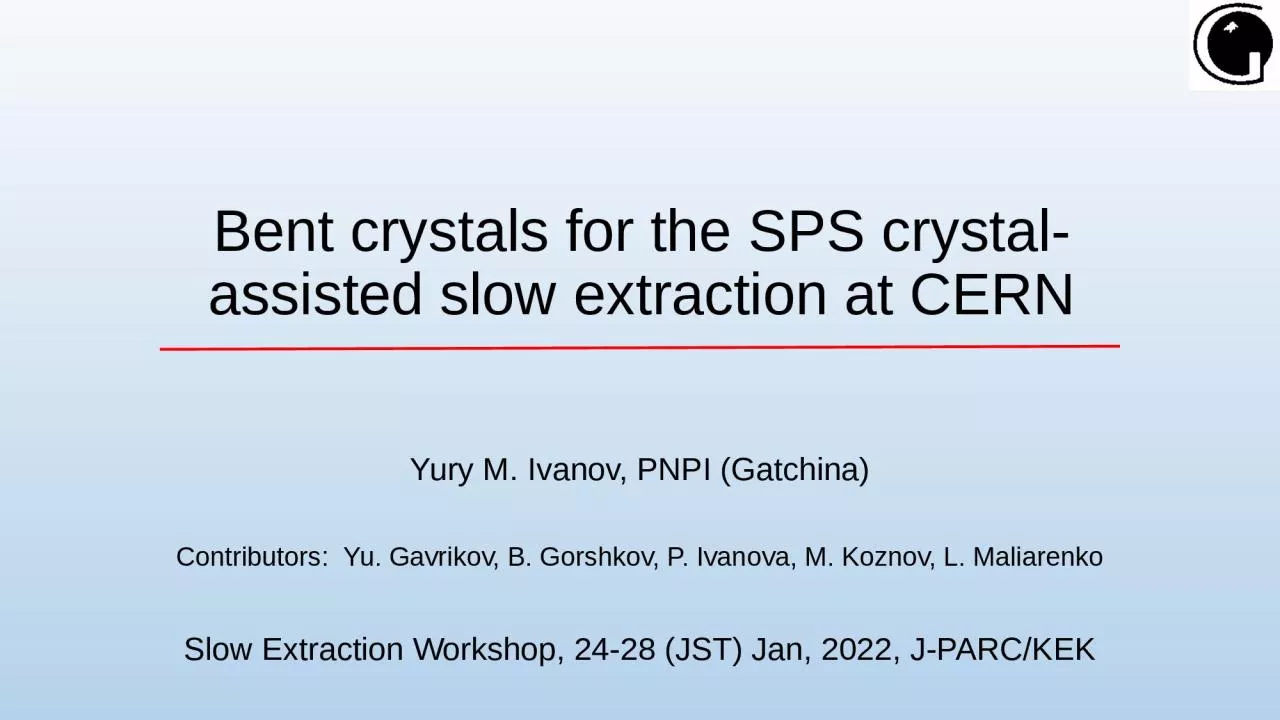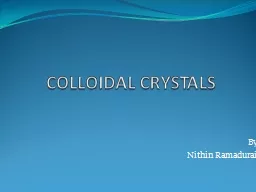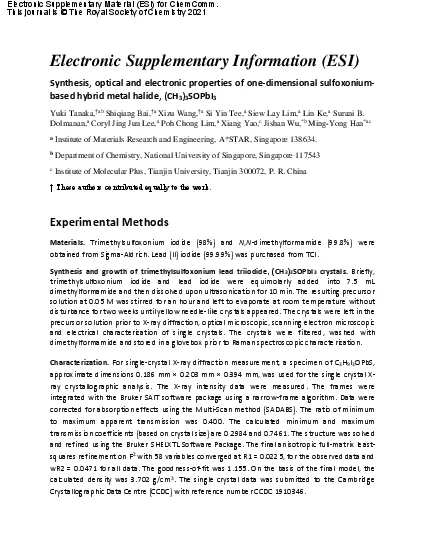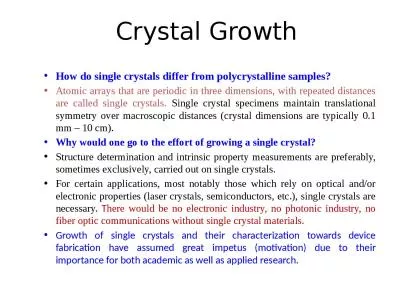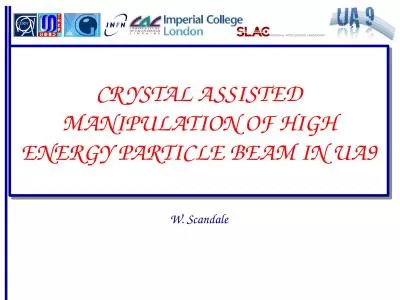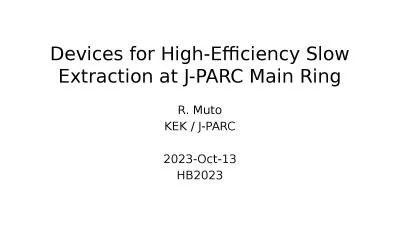PPT-Bent crystals for the SPS crystal-assisted slow extraction at CERN
Author : emma | Published Date : 2023-09-18
Yury M Ivanov PNPI Gatchina Contributors Yu Gavrikov B Gorshkov P Ivanova M Koznov L Maliarenko Slow Extraction Workshop 2428 JST Jan 2022 JPARCKEK Channeling 2
Presentation Embed Code
Download Presentation
Download Presentation The PPT/PDF document "Bent crystals for the SPS crystal-assist..." is the property of its rightful owner. Permission is granted to download and print the materials on this website for personal, non-commercial use only, and to display it on your personal computer provided you do not modify the materials and that you retain all copyright notices contained in the materials. By downloading content from our website, you accept the terms of this agreement.
Bent crystals for the SPS crystal-assisted slow extraction at CERN: Transcript
Download Rules Of Document
"Bent crystals for the SPS crystal-assisted slow extraction at CERN"The content belongs to its owner. You may download and print it for personal use, without modification, and keep all copyright notices. By downloading, you agree to these terms.
Related Documents

